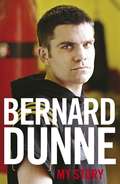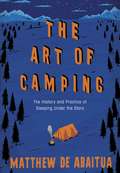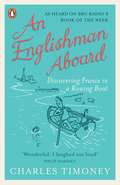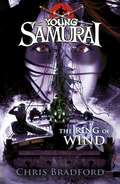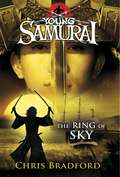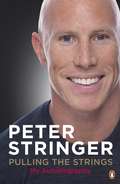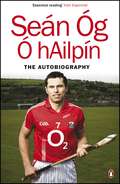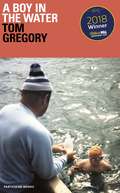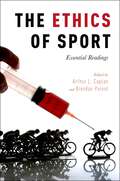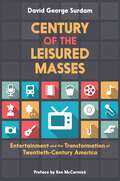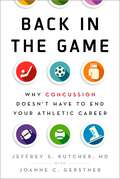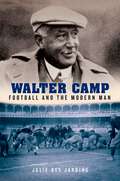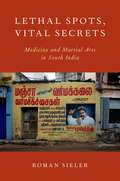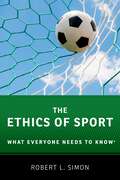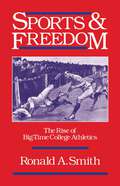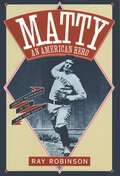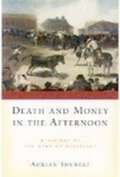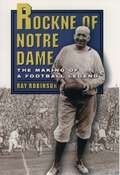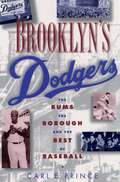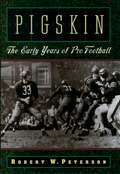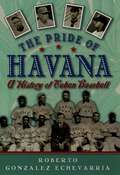- Table View
- List View
My Story
by Bernard DunneBernard Dunne boxed for the first time at the age of 6. Twenty-three years later, in an electrifying performance at the O2 arena in Dublin, he stopped the brilliant Ricardo Cordoba to take the WBA World Super Bantamweight belt. The path from the gym in west Dublin to the world title was often a rocky one. Here, for the first time, Bernard Dunne tells his own amazing story. It begins in Neilstown, where boxing ran in the family. In his amateur career, Bernard never lost to an Irish fighter; but he narrowly missed out on the 2000 Olympics, and rather than spend another four years as an amateur in search of Olympic glory he decided to go pro.Going pro meant going to California, and, under the tutelage of Sugar Ray Leonard and Freddie Roach, California became a land of dreams for Bernard. Twelve of his fourteen professional fights in America were televised nationally, and he was working towards a title fight. But he missed home, missed his family. He wanted it all: he wanted to win a world title, and he wanted to do it in Ireland.The way he went about doing that has made Bernard Dunne an Irish national treasure. After winning a European belt, he was defeated by Kiko Martinez; but he bounced back with courage and brilliance to win the WBA super bantamweight belt from Cordoba in front of a delirious crowd at the O2 arena. Rather than rest on his laurels, as many champions in his position would do, Bernard accepted the toughest challenge of all: from a slab of granite named Poonsawat. He lost the belt, but his courage and dignity in defeat were heroic. Now, Bernard tells the full story of his life and boxing career - a story full of surprises. It will thrill all his old fans and win him new ones.
The Art of Camping: The History and Practice of Sleeping Under the Stars
by Matthew De AbaituaCould there be another way of life? Can I survive with less stuff? Should I run for the hills?These are all good questions that people have asked before, throughout history, and which have inspired people to set up camp. But now camping is part of the drive for self-sufficiency, a reaction against mass tourism, a chance to connect with the land, to experience a community, to leave no trace . . . From packing to pitching, with hikes into the deep history of the subject and encounters with the great campers and camping movements of the past, this is the only book you'll need to pack when you next head off to sleep under the stars.IF THERE IS ONE THING THAT CAMPERS LIKE MORE THAN CAMPING, IT'S DREAMING ABOUT THEIR NEXT TRIP
An Englishman Aboard: Discovering France in a Rowing Boat
by Charles TimoneyFrom the author of Pardon My French and A Certain Je Ne Sais Quoi, this is the charming and hilariously funny story of one man's attempt to travel the entire length of the Seine by boatWhen Charles shows his friends the rowing boat he has spent the last six months building, he little realises the adventures that lie ahead. Several glasses of champagne later (it is New Year's Eve), he finds himself betting he will travel the entire length of the Seine from source to the sea in the next year and discover the true France. But the reality proves somewhat more difficult than he had expected. As Charles sets sail into an unvarnished France on a variety of craft from steamers to police patrol boats to inflatables, he encounters truffle-thieving terriers and obsessive fishermen, grapples with strong rapids and stubborn cattle, and is nearly destroyed by a cheese so smelly it comes with its own health warning.This is the charming and often hilarious story of Charles's Quixotic quest - and the most unique guide to the true France that you will find.Reviews:'There are new year's resolutions and then there are those rash decisions that come after the last bottle has been drunk on the last night of the year. The journey down the Seine that Charles Timoney describes in his third book about France stemmed from the latter ... a charming story of life along the river ... that lingers in the mind' Sunday Times (Books of the Month)'A wonderful view of France as seen from the water, and through the eyes of a genuinely funny writer - I laughed out loud' Philip Marsden (author of The Levelling Sea)About the author:When Charles Timoney and his French wife were both made redundant in the same week, they decided to try living in France for a year or so. It proved much harder than expected. Charles's O level in French was little help when everyone around him consistently used a wide variety of impenetrable slang and persisted in the annoying habit of talking about things he had never heard of. But they stayed. Two decades and two thoroughly French children later, An Englishman Aboard is Charles's third book on his experience of France, the French people and the French language: Pardon My French: Unleash Your Inner Gaul, A Certain Je Ne Sais Quoi: The Ideal Guide to Sounding, Acting and Shrugging Like the French and now An Englishman Aboard.
The Ring of Wind (Young Samurai #7)
by Chris BradfordJACK FLETCHER IS BATTLING THE HIGH SEASAmbushed by the Shogun's samurai, Jack and his friends have only one hope of escape - the Seto Sea. But with ferocious storms, man-eating sharks and ninja pirates at every turn, their chosen route is fraught with danger. A treacherous crew only adds to their problems as they flee south from a ruthless samurai sea lord. Unless Jack can harness the Ring of Wind, he and his friends are destined for a watery grave . . .Book 7 in the blockbuster Young Samurai series by Chris Bradford. Visit www.youngsamurai.com for competitions and FREE teacher resources.'A fantastic adventure that floors the reader on page one and keeps them there until the end' - Eoin Colfer
The Ring of Sky (Young Samurai #8)
by Chris BradfordPacked with historical action-adventure, the eighth and final book in Chris Bradford's blockbuster Young Samurai series reaches a thrilling conclusion.JACK FLETCHER IS RUNNING FOR HIS LIFEThe port of Nagasaki is within reach, but the Shogun's samurai are closing in fast for the kill. So too is Jack's old school rival, Kazuki. Every road is blocked and every mountain pass guarded as Jack makes his final dash for safety.But with all of Japan hunting him, he's going need a miracle to survive. And even if he reaches the end of the road, will there be a ship bound for home? Or will he be burned at the stake first?Only the Ring of Sky knows his fate...www.youngsamurai.com 'A fantastic adventure that floors the reader on page one and keeps them there until the end' - Eoin Colfer
Pulling the Strings: My Autobiography
by Peter StringerThe long-awaited autobiography of Ireland's most beloved rugby player: Peter StringerWhen Peter Stringer played youth rugby, he was so small that people told his parents he shouldn't be allowed on the pitch. Fortunately for Munster and for Ireland, they paid no attention. Over 200 provincial caps and 98 international caps later, Stringer is a legend.Since making his Munster debut in 1998, his lightning-quick passing, sniping breaks and brave defending have electrified fans - never more so than when he deceived the entire Biarritz team at a scrum to sneak in for the try that brought Munster its first Heineken Cup in 2006. In Ireland's breakthrough season of 2009, his man-of-the-match performance at Murrayfield helped overturn a late deficit en route to the Six Nations Grand Slam.Now, for the first time, Peter Stringer tells his own story - a story of overcoming the odds, and a story every Irish rugby fan will want to read.'What gives the publication its grit is the scrum-half's no-holds-barred descriptions of fallings-out with various coaches ... All revelatory stuff' Liam Heagney, Irish Daily Mail
The Autobiography
by Seán Óg Ó hAilpínSean Og O hAilpin, the iconic hurler of his generation, tells his own story. Sean Og O hAilpin became synonymous with Cork hurling during a period when the Rebel County reached the highest of highs and was regularly gripped by controversy. Making his trademark barnstorming solo runs from left wing-back, Sean Og emerged as the lynchpin of the great group of Cork hurlers that won five Munster titles and three All-Irelands; in 1999 he contested All-Ireland finals in both codes. He was also central in standing up for players' rights against the Cork county board - a source of great controversy and two painful strikes. Now, Sean Og tells his own story in his own words - a story every GAA fan has been waiting to read. Full of frank insights, Sean Og's autobiography is not just an essential sporting story; it is an essential Irish story.'A captivating tale of family, identity and belonging' Sunday Business Post'Hugely enjoyable' Evening Echo'A compelling, honest read that draws blood along the way ... a tale so rich that the wonder never leaves' Irish Daily Mail'Riveting' Irish Daily Star 'Excellent ... a really enjoyable read' Christy O'Connor, Evening Echo'This is Sean Og as he really is. Essential reading' Irish Examiner 'Sean Og's autobiography is a fine read. What an extraordinary figure he is' Sonia O'Sullivan
A Boy in the Water: A Memoir
by Tom Gregory'A fascinating story full of innocence, achievement, ambition and trust' Ellen MacArthur'Extraordinary' Clare BaldingThe poignant, life-affirming story of a determined boy, a visionary coach, and how the dream of a record-breaking Channel swim became realityEltham, South London. 1984: the hot fug of the swimming pool and the slow splashing of a boy learning to swim but not yet wanting to take his foot off the bottom. Fast-forward four years. Photographers and family wait on the shingle beach as a boy in a bright orange hat and grease-smeared goggles swims the last few metres from France to England. He has been in the water for twelve agonizing hours, encouraged at each stroke by his coach, John Bullet, who has become a second father. This is the story of a remarkable friendship between a coach and a boy, and a love letter to the intensity and freedom of childhood.
The Ethics of Sport: Essential Readings
Sport is often thought of as simply "games," but it can in fact be much more. Sport can be responsible for guiding social justice movements, igniting city-wide riots, uniting countries, permanently injuring youth, revolutionizing views about race, gender and class, and producing several of the most successful global industries. Reports of ethical crises in athletics are constant fodder for popular attention, whether performance enhancing drugs in baseball, corruption in college athletics, the epidemic of brain damage among NFL players, and others too numerous to mention. As a proxy for social concerns, we naturally think of sport in inherently moral terms. Yet we can hardly define the term "sport" or agree on acceptable levels of sporting risk, or determine clear roles and responsibilities for fans, players, coaches, owners, media and health care personnel. Bringing together 27 of the most essential recent articles from philosophy, history, sociology, medicine, and law, this collection explores intersections of sports and ethics and brings attention to the immense role of sports in shaping and reflecting social values.
Century of the Leisured Masses: Entertainment and the Transformation of Twentieth-Century America
by David George SurdamAmerican living standards improved considerably between 1900 and 2000. While most observers focus on gains in per-capita income as a measure of economic well-being, economists have used other measures of well-being: height, weight, and longevity. The increased amount of leisure time per week and across people's lifetimes, however, has been an unsung aspect of the improved standard of living in America. In Century of the Leisured Masses, David George Surdam explores the growing presence of leisure activities in Americans' lives and how this development came out throughout the twentieth century. Most Americans have gone from working fifty-five or more hours per week to working fewer than forty, although many Americans at the top rungs of the economic ladder continue to work long hours. Not only do more Americans have more time to devote to other activities, they are able to enjoy higher-quality leisure. New forms of leisure have given Americans more choices, better quality, and greater convenience. For instance, in addition to producing music themselves, they can now listen to the most talented musicians when and where they want. Television began as black and white on small screens; within fifty years, Americans had a cast of dozens of channels to choose from. They could also purchase favorite shows and movies to watch at their convenience. Even Americans with low incomes enjoyed television and other new forms of leisure. This growth of leisure resulted from a combination of growing productivity, better health, and technology. American workers became more productive and chose to spend their improved productivity and higher wages by consuming more, taking more time off, and enjoying better working conditions. By century's end, relatively few Americans were engaged in arduous, dangerous, and stultifying occupations. The reign of tyranny on the shop floor, in retail shops, and in offices was mitigated; many Americans could even enjoy leisure activities during work hours. Failure to consider the gains in leisure time and leisure consumption understates the gains in American living standards. With Century of the Leisured Masses, Surdam has comprehensively documented and examined the developments in this important marker of well-being throughout the past century.
CENTURY OF LEISURED MASSES C: Entertainment and the Transformation of Twentieth-Century America
by David George SurdamAmerican living standards improved considerably between 1900 and 2000. While most observers focus on gains in per-capita income as a measure of economic well-being, economists have used other measures of well-being: height, weight, and longevity. The increased amount of leisure time per week and across people's lifetimes, however, has been an unsung aspect of the improved standard of living in America. In Century of the Leisured Masses, David George Surdam explores the growing presence of leisure activities in Americans' lives and how this development came out throughout the twentieth century. Most Americans have gone from working fifty-five or more hours per week to working fewer than forty, although many Americans at the top rungs of the economic ladder continue to work long hours. Not only do more Americans have more time to devote to other activities, they are able to enjoy higher-quality leisure. New forms of leisure have given Americans more choices, better quality, and greater convenience. For instance, in addition to producing music themselves, they can now listen to the most talented musicians when and where they want. Television began as black and white on small screens; within fifty years, Americans had a cast of dozens of channels to choose from. They could also purchase favorite shows and movies to watch at their convenience. Even Americans with low incomes enjoyed television and other new forms of leisure. This growth of leisure resulted from a combination of growing productivity, better health, and technology. American workers became more productive and chose to spend their improved productivity and higher wages by consuming more, taking more time off, and enjoying better working conditions. By century's end, relatively few Americans were engaged in arduous, dangerous, and stultifying occupations. The reign of tyranny on the shop floor, in retail shops, and in offices was mitigated; many Americans could even enjoy leisure activities during work hours. Failure to consider the gains in leisure time and leisure consumption understates the gains in American living standards. With Century of the Leisured Masses, Surdam has comprehensively documented and examined the developments in this important marker of well-being throughout the past century.
Back in the Game: Why Concussion Doesn't Have to End Your Athletic Career
by Jeffrey S. Kutcher Joanne C. GerstnerThe word concussion was unheard of in youth sports a decade ago. The injury was indeed occurring, but youth athletes were often told to "shake it off" after "getting their bell rung". Science and increased awareness about concussion and brain health have transformed the way youth parents, coaches, and players pursue athletics. Fear of incurring concussions, as well as incomplete or incorrect information, is leading some parents to keep their children out of contact sports, such as football and soccer, where concussion is more prevalent. Back in the Game: Why Concussion Doesn't Have to End Your Athletic Career does not dwell on perpetuating fears but, rather, provides the most up-to-date understanding of the condition. This is a real-world discussion of what science and medicine know, what parents and coaches need to understand about concussion, evaluation and treatment, and what possible post-concussive issues exist. The expertise and experiences of noted sports neurologist Jeffrey S. Kutcher, MD, along with reporting and interviews by award-winning sports journalist Joanne C. Gerstner, make this book a timely, relevant, and real discussion about concussions in youth sports. Athletes and professional coaches who have participated in the formation of this book include two-time Olympic gold medalist soccer player Kate Markgraf, former NHL/Team Canada head coach Andy Murray, champion X-Games snowboarder Ellery Hollingsworth, along with an array of youth parents, coaches, and athletes from across the country.
BACK IN THE GAME C: Why Concussion Doesn't Have to End Your Athletic Career
by Jeffrey S. Kutcher Joanne C. GerstnerThe word concussion was unheard of in youth sports a decade ago. The injury was indeed occurring, but youth athletes were often told to "shake it off" after "getting their bell rung". Science and increased awareness about concussion and brain health have transformed the way youth parents, coaches, and players pursue athletics. Fear of incurring concussions, as well as incomplete or incorrect information, is leading some parents to keep their children out of contact sports, such as football and soccer, where concussion is more prevalent. Back in the Game: Why Concussion Doesn't Have to End Your Athletic Career does not dwell on perpetuating fears but, rather, provides the most up-to-date understanding of the condition. This is a real-world discussion of what science and medicine know, what parents and coaches need to understand about concussion, evaluation and treatment, and what possible post-concussive issues exist. The expertise and experiences of noted sports neurologist Jeffrey S. Kutcher, MD, along with reporting and interviews by award-winning sports journalist Joanne C. Gerstner, make this book a timely, relevant, and real discussion about concussions in youth sports. Athletes and professional coaches who have participated in the formation of this book include two-time Olympic gold medalist soccer player Kate Markgraf, former NHL/Team Canada head coach Andy Murray, champion X-Games snowboarder Ellery Hollingsworth, along with an array of youth parents, coaches, and athletes from across the country.
Walter Camp: Football and the Modern Man
by Julie Des JardinsAmericans are obsessed with football, yet they know little about the man who shaped the game to make it uniquely technical, physical, and 'man-making' at once. Walter Camp, the "Father of American Football," was the foremost authority on American athletics and arguably the greatest amateur American athlete of his time. In Walter Camp: Football and the Modern Man, Julie Des Jardins chronicles the life of the clock company executive and self-made athlete who remade football and redefined the ideal man. As a student at Yale University, Camp was a varsity letterman who led the earliest efforts to codify the rules and organization of football-including the line of scrimmage and "downs"-to make it distinct from English rugby. He also invented the All-America Football Team and wrote some of the first football fiction, guides, and sports page coverage, making him the foremost popularizer of the game. Within a decade American football was an obsession on college campuses of the Northeast. By the turn of the century, it was a bona fide national pastime. Since the Civil War, college men of good breeding had not a physical skirmish to harden them. They had grown soft, Americans feared, both in body and attitude. Camp saw football as the antidote to the degeneration of these young men. When massive numbers of college football players enlisted to fight in World War I, Camp held them up as proof that football turned men effective and courageous. His influence over the game, however, was not always viewed as beneficial. Under his watch, dozens of college and high school players were killed or maimed on the gridiron. President Theodore Roosevelt urged him to reform football to prevent administrators from banning it, but Camp was ambivalent about removing the very physicality that made the game man-making in his eyes. The criticism targeted at him over the aggressiveness of football still haunts the game today. In this fast-paced biography, Julie Des Jardins shows how the "gentleman athlete" was as much the arbiter of football as he was the arbiter of modern manhood. Though eventually football took on meanings that Camp never intended, his impact on the professional and college game is simply unsurpassed.
Lethal Spots, Vital Secrets: Medicine and Martial Arts in South India
by Roman SielerLethal Spots, Vital Secrets provides an ethnographic study of varmakkalai, or "the art of the vital spots," a South Indian esoteric tradition that combines medical practice and martial arts. Although siddha medicine is officially part of the Indian Government's medically pluralistic health-care system, very little of a reliable nature has been written about it. Drawing on a diverse array of materials, including Tamil manuscripts, interviews with practitioners, and his own personal experience as an apprentice, Sieler traces the practices of varmakkalai both in different religious traditions--such as Yoga and Ayurveda--and within various combat practices. His argument is based on in-depth ethnographic research in the southernmost region of India, where hereditary medico-martial practitioners learn their occupation from relatives or skilled gurus through an esoteric, spiritual education system. Rituals of secrecy and apprenticeship in varmakkalai are among the important focal points of Sieler's study. Practitioners protect their esoteric knowledge, but they also engage in a kind of "lure and withdrawal"---a performance of secrecy---because secrecy functions as what might be called "symbolic capital." Sieler argues that varmakkalai is, above all, a matter of texts in practice; knowledge transmission between teacher and student conveys tacit, non-verbal knowledge, and constitutes a "moral economy." It is not merely plain facts that are communicated, but also moral obligations, ethical conduct and tacit, bodily knowledge. Lethal Spots, Vital Secrets is an insightful analysis of practices rarely discussed in scholarly circles. It will be a valuable resource to students of religion, medical anthropologists, historians of medicine, Indologists, and martial arts and performance studies.
The Ethics of Sport: What Everyone Needs to Know® (What Everyone Needs To Know®)
by Robert L. SimonWe encourage children to play sports from an early age in order to instill in them such virtues as teamwork, perseverance, respect, fairness, and discipline, but, as perennial scandals in the headlines show us, sports also give rise to thorny ethical problems. Can the ugly, corrupt side of sports counteract their potential to deepen our moral lives and make a positive impact? This accessible book tackles a wide-ranging array of topics that arise in ethics of sport on every level, from amateur to professional, and from the general to the specific. Ethics of sport expert Robert Simon examines provocative, thorny questions throughout the book: Why do we care so much about sports? Do sports embody special values that social function views fail to grasp? Are such values good or bad? What counts as overemphasizing winning? Should winning be important in youth sports? What makes cheating in sports ethically objectionable? Is trash-talking cheating? How have performance enhancing drugs affected sport? Can we distinguish them from other advances that enhance performance, such as technological improvements in equipment? Should contact sports be modified to protect the health of athletes? Do organized athletics belong in schools? Don't athletic programs undermine academics in secondary and college education? Would it be better to separate sports and education, so schools focus on academics? Do sports undermine or reinforce gender equity? Why do so many elite athletes misbehave? How have professional sports affected minority groups and the underprivileged? Is money ruining elite sport? Simon's short exploration of the ethics of sports, which unfolds in this series' distinctive question-and-answer format, will interest sports enthusiasts, those who seek to understand the ethical controversies in sport even from an outsider's perspective, and students of applied ethics who need a primer on sports ethics in particular.
The Ethics of Sport: What Everyone Needs to Know® (What Everyone Needs To Know®)
by Robert L. SimonWe encourage children to play sports from an early age in order to instill in them such virtues as teamwork, perseverance, respect, fairness, and discipline, but, as perennial scandals in the headlines show us, sports also give rise to thorny ethical problems. Can the ugly, corrupt side of sports counteract their potential to deepen our moral lives and make a positive impact? This accessible book tackles a wide-ranging array of topics that arise in ethics of sport on every level, from amateur to professional, and from the general to the specific. Ethics of sport expert Robert Simon examines provocative, thorny questions throughout the book: Why do we care so much about sports? Do sports embody special values that social function views fail to grasp? Are such values good or bad? What counts as overemphasizing winning? Should winning be important in youth sports? What makes cheating in sports ethically objectionable? Is trash-talking cheating? How have performance enhancing drugs affected sport? Can we distinguish them from other advances that enhance performance, such as technological improvements in equipment? Should contact sports be modified to protect the health of athletes? Do organized athletics belong in schools? Don't athletic programs undermine academics in secondary and college education? Would it be better to separate sports and education, so schools focus on academics? Do sports undermine or reinforce gender equity? Why do so many elite athletes misbehave? How have professional sports affected minority groups and the underprivileged? Is money ruining elite sport? Simon's short exploration of the ethics of sports, which unfolds in this series' distinctive question-and-answer format, will interest sports enthusiasts, those who seek to understand the ethical controversies in sport even from an outsider's perspective, and students of applied ethics who need a primer on sports ethics in particular.
LETHAL SPOTS, VITAL SECRETS C: Medicine and Martial Arts in South India
by Roman SielerLethal Spots, Vital Secrets provides an ethnographic study of varmakkalai, or "the art of the vital spots," a South Indian esoteric tradition that combines medical practice and martial arts. Although siddha medicine is officially part of the Indian Government's medically pluralistic health-care system, very little of a reliable nature has been written about it. Drawing on a diverse array of materials, including Tamil manuscripts, interviews with practitioners, and his own personal experience as an apprentice, Sieler traces the practices of varmakkalai both in different religious traditions--such as Yoga and Ayurveda--and within various combat practices. His argument is based on in-depth ethnographic research in the southernmost region of India, where hereditary medico-martial practitioners learn their occupation from relatives or skilled gurus through an esoteric, spiritual education system. Rituals of secrecy and apprenticeship in varmakkalai are among the important focal points of Sieler's study. Practitioners protect their esoteric knowledge, but they also engage in a kind of "lure and withdrawal"---a performance of secrecy---because secrecy functions as what might be called "symbolic capital." Sieler argues that varmakkalai is, above all, a matter of texts in practice; knowledge transmission between teacher and student conveys tacit, non-verbal knowledge, and constitutes a "moral economy." It is not merely plain facts that are communicated, but also moral obligations, ethical conduct and tacit, bodily knowledge. Lethal Spots, Vital Secrets is an insightful analysis of practices rarely discussed in scholarly circles. It will be a valuable resource to students of religion, medical anthropologists, historians of medicine, Indologists, and martial arts and performance studies.
Sports and Freedom: The Rise of Big-Time College Athletics (Sports and History)
by Ronald A. SmithPerhaps more than any other two colleges, Harvard and Yale gave form to American intercollegiate athletics--a form that was inspired by the Oxford-Cambridge rivalry overseas, and that was imitated by colleges and universities throughout the United States. Focusing on the influence of these prestigious eastern institutions, this fascinating study traces the origins and development of intercollegiate athletics in America from the mid-nineteenth century to the early twentieth century. Smith begins with an historical overview of intercollegiate athletics and details the evolution of individual sports--crew, baseball, track and field, and especially football. Then, skillfully setting various sports events in their broader social and cultural contexts, Smith goes on to discuss many important issues that are still relevant today: student-faculty competition for institutional athletic control; the impact of the professional coach on big-time athletics; the false concept of amateurism in college athletics; and controversies over eligibility rules. He also reveals how the debates over brutality and ethics created the need for a central organizing body, the National Collegiate Athletic Association, which still runs college sports today. Sprinkled throughout with spicy sports anecdotes, from the Thanksgiving Day Princeton-Yale football game that drew record crowds in the 1890s to a meeting with President Theodore Roosevelt on football violence, this lively, in-depth investigation will appeal to serious sports buffs as well as to anyone interested in American social and cultural history.
Matty: Christy Mathewson of the New York Giants
by Ray RobinsonWhen all-time pitching great Christy Mathewson died of tuberculosis in 1925 at the age of 45, it touched off a wave of national mourning that remains without precedent for an American athlete. The World Series was underway, and the game the day after Mathewson's death took on the trappings of a state funeral: officials slowly lowered the flag to half-mast, each ballplayer wore a black armband, and fans joined together in a chorus of "Nearer My God to Thee." Newspaper editorials recalled Mathewson's glorious career with the New York Giants, but also emphasized his unstinting good sportsmanship and voluntary service in World War I. The pitcher known to one and all as "Matty" or "Big Six" was as beloved for the strength of character he brought to the national pastime, as for his stunning 373 career victories. "I do not expect to see his like again," said his best friend and former manager, John McGraw. "But I do know that the example he set and the imprint he left on the sport that he loved and honored will remain long after I am gone." In Matty, Ray Robinson tells the story of a man who became America's first authentic sports hero. Until Mathewson, Robinson reveals, Americans loved baseball, but looked down on ballplayers and other athletes as hard-drinking, skirt-chasing ne'er-do-wells. Deprived of real-life role models, millions of readers followed the serialized exploits of Frank Merriwell, a fictional hero who excelled at sports from baseball to billiards and never drank, smoke, or swore. Robinson shows how an eager public greeted Mathewson as a flesh-and-blood version of Merriwell from his first year at Bucknell University, where he shone as star pitcher, premier field-goal kicker, and class president. Lured into the big leagues before he could graduate, the tall, handsome pitcher soon won over men, women and children with his sense of fair play and his arsenal of blazing fastballs, sweeping curves, and infamously deceptive fadeaway pitches. Robinson skillfully details the highlights of Mathewson's career, including his showdowns against the great batters of his day and his encounters with the young Brooklyn, Chicago, Pittsburgh and St. Louis teams. Here are the six remarkable days in October, 1905 when Mathewson became the only pitcher ever to hurl three straight shutouts in a World Series, and the afternoon at West Point when he won $50 in a bet that he could throw 20 of his best pitches to exactly the same spot. Robinson does not underplay Mathewson's occasional failings, but the most surprising aspect of this fascinating portrait is just how close America's first Hall of Fame pitcher came to living up to his image. Drawing on rare interviews, press clips, and long overlooked eyewitness accounts, Matty brings baseball's golden age to life--not only the great teams and the early superstars, but the long train trips between games, with cramped berths and no air conditioning; the small town ballplayers let loose amidst big city vice; and the two-bit gambling that eventually led to the infamous Black Sox Scandal of the 1919 Series (a scandal that might have escaped detection if the sportswriters in the press box with Mathewson had not been able to rely on his experienced eye for clues to how ballplayers might throw games). Offering rare insight into the making of an early twentieth century American hero, Matty is must reading for anyone who loves baseball.
Death and Money in The Afternoon: A History of the Spanish Bullfight
by Adrian ShubertBullfighting has long been perceived as an antiquated, barbarous legacy from Spain's medieval past. In fact, many of that country's best poets, philosophers, and intellectuals have accepted the corrida as the embodiment of Spain's rejection of the modern world. In his brilliant new interpretation of bullfighting, Adrian Shubert maintains that this view is both the product of myth and a complete misunderstanding of the real roots of the contemporary bullfight. While references to a form of bullfighting date back to the Poem of the Cid (1040), the modern bullfight did not emerge until the early 18th century. And when it did emerge, it was far from being an archaic remnant of the past--it was a precursor of the 20th-century mass leisure industry. Indeed, before today's multimillion-dollar athletes with wide-spread commercial appeal, there was Francisco Romero, born in 1700, whose unique form of bullfighting netted him unprecedented fame and wealth, and Manuel Rodriguez Manolete, hailed as Spain's greatest matador by the New York Times after a fatal goring in 1947. The bullfight was replete with promoters, agents, journalists, and, of course, hugely-paid bullfighters who were exploited to promote wine, cigarettes, and other products. Shubert analyzes the business of the sport, and explores the bullfighters' world: their social and geographic origins, careers, and social status. Here also are surprising revelations about the sport, such as the presence of women bullfighters--and the larger gender issues that this provoked. From the political use of bullfighting in royal and imperial pageants to the nationalistic "great patriotic bullfights" of the late 19th and early 20th centuries, this is both a fascinating portrait of bullfighting and a vivid recreation of two centuries of Spanish history. Based on extensive research and engagingly written, Death and Money in the Afternoon vividly examines the evolution of Spanish culture and society through the prism of one of the West's first--and perhaps its most spectacular--spectator sports.
Rockne of Notre Dame: The Making of a Football Legend
by Ray RobinsonIn a mere twelve years, Rockne's "Fighting Irish" won 105 games, including five astonishing undefeated seasons. But Rockne was more than the sum of his victories--he was an icon who, more than anyone, made football an American obsession. The book gives us colorful descriptions of such Rockne teams as the undefeated 1924 eleven led by the illustrious Four Horsemen, and the 1930 squad, Rockne's last and greatest. A renowned motivator whose "Win one for the Gipper" is the most famous locker-room speech ever, Rockne was also football's most brilliant innovator, a pioneer of the forward pass, a master of the psychological ploy, and an early advocate of conditioning. In this balanced account, Rockne emerges as an exemplary and complex figure: a fierce competitor who was generous in victory and defeat; an inspiring father figure to his players; and a man so revered nationwide that when he died in a plane crash in 1931, at the height of his career, he was mourned by the entire country. "A solid portrait of one of football's most solid figures."--The New York Times Book Review
Brooklyn's Dodgers: The Bums, the Borough, and the Best of Baseball, 1947-1957
by Carl E. PrinceDuring the 1952 World Series, a Yankee fan trying to watch the game in a Brooklyn bar was told, "Why don't you go back where you belong, Yankee lover?" "I got a right to cheer my team," the intruder responded, "this is a free country." "This ain't no free country, chum," countered the Dodger fan, "this is Brooklyn." Brooklynites loved their "Bums"--Pee Wee Reese, Jackie Robinson, Duke Snider, Roy Campanella, and all the murderous parade of regulars who, after years of struggle, finally won the World Series in 1955. One could not live in Brooklyn and not catch its spirit of devotion to its baseball club. In Brooklyn's Dodgers, Carl E. Prince captures the intensity and depth of the team's relationship to the community and its people in the 1950s. Ethnic and racial tensions were part and parcel of a working class borough; the Dodgers' presence smoothed the rough edges of the ghetto conflict always present in the life of Brooklyn. The Dodger-inspired baseball program at the fabled Parade Grounds provided a path for boys that occasionally led to the prestigious "Dodger Rookie Team," and sometimes, via minor league contracts, to Ebbets Field itself. There were the boys who lined Bedford Avenue on game days hoping to retrieve home run balls and the men in the many bars who were not only devoted fans but collectively the keepers of the Dodger past--as were Brooklyn women, and in numbers. Indeed, women were tied to the Dodgers no less than their husbands, fathers, brothers, and sons; they were only less visible. A few, like Pulitzer Prize-winning poet Marianne Moore and working class stiff Hilda Chester were regulars at Ebbets Field and far from invisible. Prince also explores the underside of the Dodgers--the "baseball Annies," and the paternity suits that went with the territory. The Dodgers' male culture was played out as well in the team's politics, in the owners' manipulation of Dodger male egos, opponents' race-baiting, and the macho bravado of the team (how Jackie Robinson, for instance, would prod Giants' catcher Sal Yvars to impotent rage by signaling him when he was going to steal second base, then taunting him from second after the steal). The day in 1957 when Walter O'Malley, the owner of the Brooklyn Dodgers, announced that the team would be leaving for Los Angeles was one of the worst moments in baseball history, and a sad day in Brooklyn's history as well. The Dodger team was, to a degree unmatched in other major league cities, deeply enmeshed in the life and psyche of Brooklyn and its people. In this superb volume, Carl Prince illuminates this "Brooklyn" in the golden years after the Second World War.
Pigskin: The Early Years of Pro Football
by Robert W. PetersonIf the National Football League is now a mammoth billion-dollar enterprise, it was certainly born into more humble circumstances. Indeed, it began in 1920 in an automobile showroom in Canton, Ohio, when a car dealer called together some owners of teams, mostly in the Midwest, to form a league. Unlike the lavish boardrooms in which NFL owners meet today, on this occasion the owners sat on the running boards of cars in the showroom and drank beer from buckets. A membership fee of $100 was set, but no one came up with any money. (As one of those present, George Halas, the legendary owner of the Chicago Bears, said, "I doubt that there was a hundred bucks in the room.") From such modest beginnings, pro football became far and away the most popular spectator sport in America. In Pigskin, Robert W. Peterson presents a lively and informative overview of the early years of pro football--from the late 1880s to the beginning of the television era. Peterson describes the colorful beginnings of the pro game and its outstanding teams (the Green Bay Packers, the New York Giants, the Chicago Bears, the Baltimore Colts), and the great games they played. Profiles of the most famous players of the era--including Pudge Heffelfinger (the first certifiable professional), Jim Thorpe, Red Grange, Bronko Nagurski, and Fritz Pollard (the NFL's first black star)--bring the history of the game to life. Peterson also takes us back to the roots of the pro game, showing how professionalism began when some stars for Yale, Harvard, and Princeton took money--under the table, of course--for their services to alma mater. By 1895, the money makers--still unacknowledged--had moved to amateur athletic associations in western Pennsylvania and subsequently into Ohio. After the NFL formed in 1920, pro football's popularity grew gradually but steadily. It burst into national prominence with the Bears-Redskins championship game of 1940. As one sportswriter put it: "The weather was perfect. So were the Bears." The final score was 73-0. Peterson shows how, after World War II, the newly-created All America Football Conference challenged the NFL. Though dominated by a gritty Cleveland team, the AAFC was never viewed by NFL teams as much of a threat. That is, not until 1950 when the two leagues merged, bringing about the Cleveland Browns-Philadelphia Eagles game in which the Browns buried the Eagles 35-10. An elegy to a time when, for many players, the game was at least as important as the money it brought them (which wasn't much), Pigskin takes readers up to the 1958 championship game when the Baltimore Colts beat the New York Giants in overtime. By that time, the great popularity of the game had moved from newspapers and radio to television, and pro football had finally arrived as a major sport.
The Pride of Havana: A History of Cuban Baseball
by Roberto Gonzalez EchevarriaFrom the first amateur leagues of the 1860s to the exploits of Livan and Orlando "El Duque" Hernandez, here is the definitive history of baseball in Cuba. Roberto Gonzalez Echevarria expertly traces the arc of the game, intertwining its heroes and their stories with the politics, music, dance, and literature of the Cuban people. What emerges is more than a story of balls and strikes, but a richly detailed history of Cuba told from the unique cultural perch of the baseball diamond. Filling a void created by Cuba's rejection of bullfighting and Spanish hegemony, baseball quickly became a crucial stitch in the complex social fabric of the island. By the early 1940s Cuba had become major conduit in spreading the game throughout Latin America, and a proving ground for some of the greatest talent in all of baseball, where white major leaguers and Negro League players from the U.S. all competed on the same fields with the cream of Latin talent. Indeed, readers will be introduced to several black ballplayers of Afro-Cuban descent who played in the Major Leagues before Jackie Robinson broke the color barrier once and for all. Often dramatic, and always culturally resonant, Gonzalez Echevarria's narrative expertly lays open the paradox of fierce Cuban independence from the U.S. with Cuba's love for our national pastime. It shows how Fidel Castro cannily associated himself with the sport for patriotic p.r.--and reveals that his supposed baseball talent is purely mythical. Based on extensive primary research and a wealth of interviews, the colorful, often dramatic anecdotes and stories in this distinguished book comprise the most comprehensive history of Cuban baseball yet published and ultimately adds a vital lost chapter to the history of baseball in the U.S.
